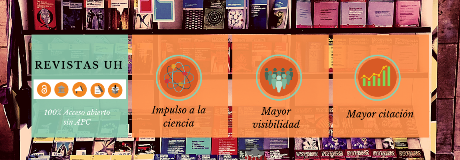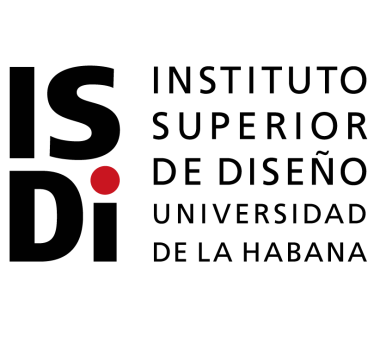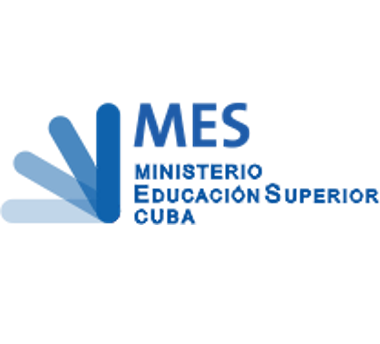2020 - ISDi Master's Thesis
##plugins.themes.bootstrap3.article.main##
Abstract
D.I. Alfredo G. Rodríguez Diago. Model of the effective communication process of project design results.
Communication, associated with the results of design projects, is one of the skills that are emerging as important in the work of the profession. Modeling and describing the process from which communication for design is conceived and executed, and highlighting those variables that intervene in it, are useful tools to ensure that all the elements and sequence of steps are taken into consideration to achieve that this activity is done effectively, achieving an impact on the audience.
Methods and techniques such as Documentary Analysis, Analysis-Synthesis, Induction-Deduction, Surveys and finally Modeling are used to outline the structuring of a process not previously described from the Design profession, adapting the different theories of communication to the chores of the productive activity. The Process of Effective Communication of Design Results is structured from stages, phases and actions, which mark the planning, structuring, realization and execution of the communication, from the intervention of a set of interconnected variables, whose particular presence In each situation, they define a type of communication that manifests itself in a specific way.
A model that combines process and structure, allows collecting this sequence and interaction between each of the parties, serving as a tool to achieve communication objectives adapted to particular conditions to achieve communicative effectiveness.
DI. Maité Fundora Iglesias. Incidence of typographic design in the processes of legibility and readability of printed texts.
From the twentieth century, with the creation of the first university design schools, typography began to be considered an essential discipline and, from then until today, various research projects have been developed with the aim of giving it greater scientific weight in your study. Since then it has been seen in two senses, on the one hand, as a design resource for the solution of the most diverse professional problems and typographic design as a professional problem in itself.
The relationship between reading and typography in most of the literature and studies carried out is made from the approach of two fundamental terms or processes: the readingbiity and the legibility of the text.
Most designers at the time of choosing a typeface for the composition of a body of text as well as for the selection of the resources of the micro and macro typography they use, do it based on their professional expertise and experience. own as a reader, being insufficient the scientific foundation that recommends the characteristics of a source for its use in a mass of text.
The thesis consists of an introduction and two chapters, conclusions, recommendations, bibliography and annexes.
Introduction: The Theoretical Methodological Design of the research is described.
Chapter I: "Theoretical - methodological references that support the role of typographic design in the readability and readability of a printed text" contains the systematization of references around reading, typography, legibility and readability, as well as the antecedents related to the studies of developed readability and readability. The role of typography in the processes of readability and readability is established.
Chapter II: "Incidence levels of the elements of typographic design at the micro and macro level in the processes of readability and readability of a printed text" the elements of the typography are organized according to their levels of use, the instrument is elaborated for consultation to experts, the reliability of the document is validated and the results of the expert consultation are applied and evaluated. All these aspects allow the elaboration of a hierarchical ordering of the elements of the micro and the macro according to their level of incidence in the processes of readability and readability of a printed text.
DI. Eviel Ramos Pérez Visual Identity Management Diagnostic System for State Companies in Cuba.
The scientific novelty of the research lies in the proposal of a diagnostic system, made up of techniques and methods, for the management of Visual Identity for State Companies in Cuba, which will contribute to the fact that they have instruments that allow them to undertake actions towards to achieve greater recognition and positioning in the market.
The research is structured in:
Introduction: Theoretical Research Design with all the components of the Research Process.
Chapter 1. It is dedicated to clarifying the different concepts that support Management in general and Visual Identity Management in particular, as well as the ways or methods if they exist for its initial and timely diagnosis.
Chapter 2. The methods and techniques that make up the system proposal with all its components and the order in which they will be applied in companies to guarantee reliable results are described. The dependent variable is operationalized to determine the components of the method or instrument to be validated. The existing methods for the validation of the data collection instruments and the one that is selected are exposed.
Chapter 3. The results of the validation of the instrument with the selected methodology are shown, as well as the tabulation and analysis of the results.
Conclusions and Recommendations, Bibliography and Annexes.
##plugins.themes.bootstrap3.article.details##

This work is licensed under a Creative Commons Attribution-NonCommercial-ShareAlike 4.0 International License.
- Attribution — You must give appropriate credit , provide a link to the license, and indicate if changes were made . You may do so in any reasonable manner, but not in any way that suggests the licensor endorses you or your use.
- NonCommercial — You may not use the material for commercial purposes .
- No additional restrictions — You may not apply legal terms or technological measures that legally restrict others from doing anything the license permits.
- ShareAlike — If you remix, transform, or build upon the material, you must distribute your contribution under the same license as the original. NOTE: This point applies to numbers 1 to 20 of the magazine with the previous CC-BY-NC-SA 4.0 license. Does not apply to the new CC BY-NC 4.0 license from Volume 11, Number. 21 (2024).
References
Fundora, M. (2020). Tesis de maestría: Incidencia del diseño tipográfico en los procesos de legibilidad y lecturabilidad de los textos impresos. La Habana. Biblioteca ISDi.
Ramos, E. (2020). Tesis de maestría: Sistema de Diagnóstico de la Gestión de la Identidad Visual para Empresas Estatales en Cuba. La Habana. Biblioteca ISDi.
Rodríguez, A. (2020). Tesis de maestría: Modelo del proceso de comunicación efectiva de resultados proyectuales de diseño. La Habana. Biblioteca ISDi.


















